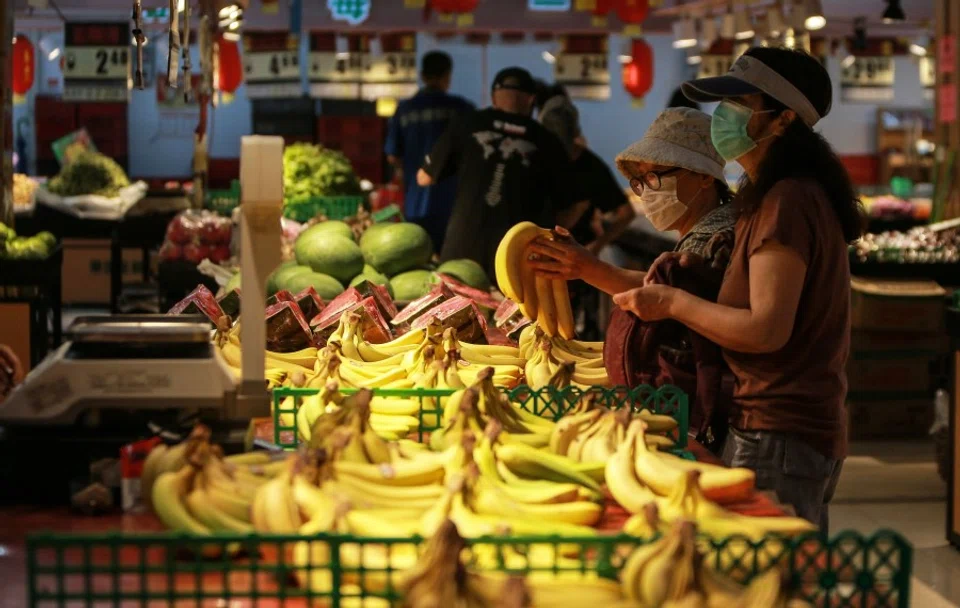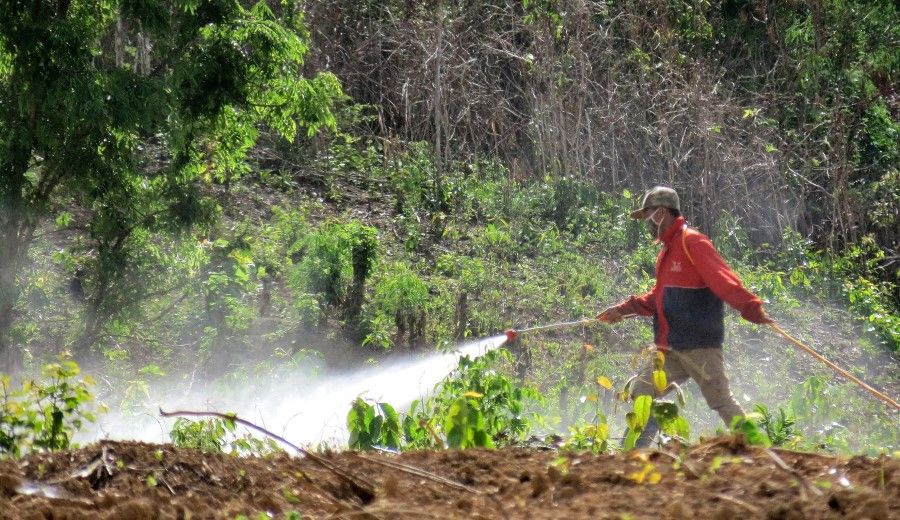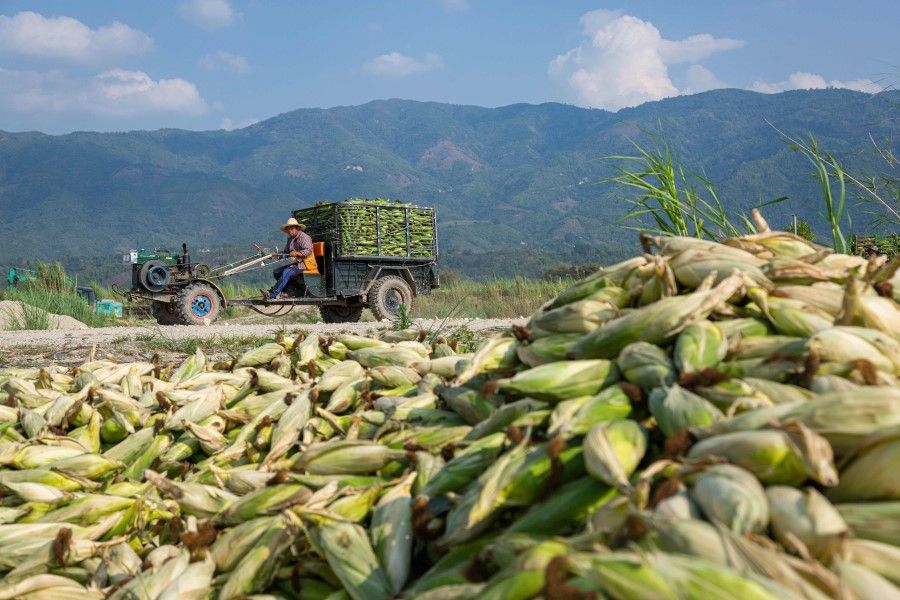China's growing appetite poses environmental challenges for Southeast Asian countries

The impact of the rise of China on Southeast Asia is multi-dimensional. Media and academic attention have focused on the sensational aspects of China's increasingly assertive postures in the South China Sea, the grand strategies of its Belt and Road Initiative, and the push for infrastructure development in the region. Far fewer studies have examined the everyday forms of Chinese influence that have emerged as a consequence of China's need to sustain growth and accommodate its humongous consumption power.
China's consumption-driven growth
Even as the Covid-19 pandemic and the China-US trade war have hit the Chinese economy hard, the effects are likely to be short term against the long-range horizon. China's domestic demand, which had taken a knocking when entire provinces were on lockdown and consumption-related social gatherings were largely banned, is expected to provide resilience and drive the recovery from current challenges.
China imports almost half of the fruits and vegetables produced in Myanmar, Thailand and Vietnam.
Such is the magnitude of China's phenomenal consumption-driven growth and shifting demographics. The country's burgeoning middle class and the sheer volume of its 1.4 billion population will continue to maintain a high demand for non-subsistence food items in the years ahead. This represents a sizeable market opportunity especially for its neighbours, and this has led to a growing Chinese presence in Southeast Asia's agribusiness sector. According to recent statistics, China imports almost half of the fruits and vegetables produced in Myanmar, Thailand and Vietnam.

China's middle-class growth not only translates into an overall increase in food consumption but also changes in the structure of such consumption. Particularly, the demand for quality food such as meat, dairy, vegetables, and fruits is set to increase further as a result of the shift away from subsistence consumption of grains. Mainland Southeast Asia, for example, has become one of the main sources for fruits such as durians, mangos, bananas, watermelons, and so on.
The weak state institutions in certain Southeast Asian states make them vulnerable to certain practices in the agribusiness sector.
The other reason for Chinese entry into the region's agricultural space is the adoption of the "going out" strategy by the Chinese government encouraging domestic businesses to seek investment opportunities abroad. Due to its geographical proximity, Southeast Asia has become a major destination for Chinese FDI. Certainly, the lion share of such FDI goes to sectors such as energy, mining, industrial parks, and infrastructure, and agriculture accounts for but a small percentage. Many studies have looked at cases of Chinese agricultural investment in Africa, but now, more attention is being paid to Southeast Asia where Chinese presence in the agribusiness sector has been growing.
This shift will certainly bring economic benefits to Southeast Asia farmers. However there are negative externalities to be considered. In particular, new farming practices have transformed the agricultural frontiers and introduced environmental challenges and degradation, such as deforestation and pollution. These challenges have been especially pronounced in the corn plantations of northern Myanmar and in the banana plantations in Laos. Although these problems are related to Chinese demand and industry practices, they are also caused by the lack of effective monitoring mechanisms on the part of local authorities. The weak state institutions in certain Southeast Asian states make them vulnerable to certain practices in the agribusiness sector.
Corn plantations and deforestation in Myanmar
The Chinese animal feed market is growing rapidly due to increasing demand for meat and meat products, especially pork. This market is highly sensitive to the prices of raw materials such as wheat, corn and soybean. At the same time, the huge rise in demand for animal feed has led to a growing need for corn imports. Conditions were worsened by the fact that between 2010 and 2012, there was a global commodity price shock, and between 2010 and 2011, the global price of corn rose by 57%, jumping from US$185.91 per metric ton to US$291.68. It continued to increase in 2012 to almost US$300 per metric ton.
This acceleration in corn production has brought collateral damage to forest coverage in northern Myanmar.
High Chinese domestic demand combined with the global commodity price shock pushed up the price of corn in the Chinese market even further. To put this into perspective, a ton of corn was worth US$298.42 on global markets in 2012; however, the same cost US$385.98 on the Chinese market. Indeed, the Chinese domestic price for corn continues to be higher than the global market price, partly due to the import tariff, and apparently Chinese customers are willing to pay more. This creates a strong incentive for neighbouring countries to increase production to satisfy Chinese demand. Geographic proximity and easy transportation links to China make particularly northern Myanmar and other parts of highland mainland Southeast Asia a preferable location for corn plantation.

To have a sense of the consequence of this growing Chinese demand, for example for Myanmar, we see that the country's corn production went from barely over 1200 metric tons per year in 2011 to around 1600 metric tons in 2012. In the following years, corn production has continued to rise, despite price fluctuations. This rapid rise in corn production is strongly correlated to rising global corn prices, but is also a response to increasing Chinese demand. Because of close proximity and good transportation links, as well as the existence of local ethnic Chinese merchant networks, northern Myanmar's corn tends to end up in the Chinese market. Additionally, the industrialisation of corn plantation in northern Myanmar has been facilitated by international seeds companies such as the Thai conglomerate Charoen Pokphand, and has led to more cases of contract farming as well.
This acceleration in corn production has brought collateral damage to forest coverage in northern Myanmar. Satellite data provided by Hansen Global Forest Change show a significant spike in deforestation in Myanmar's Shan State since 2011/2012. Lashio district, one of the main towns linking Mandalay to the Chinese border, has seen a dramatic spike in deforestation. Deforestation during the same period, though to a slightly lesser extent, is also observed in other parts of Shan State such as Taunggyi, Kengtung, Loilen, and some other townships.
Indeed, a casual observer to Lashio would notice that almost all the mountain slopes in and around the township have been cleared away. Instead of trees, rows and rows of corn have been planted. Around Lashio, corn has in fact become the dominant crop cultivated in the region, surpassing the traditional paddy rice. Interviews with rural households in the area, done during field work in 2018 confirmed that people increased corn cultivation because it has become more profitable to sell to the Chinese. The rationale for increasing corn planting was because of the lucrative increase in the crop's market price. Particularly in villages where the land is not suitable for rice planting, the fact that corn now can fetch a handsome price has led people to expand corn plantations to the hill slopes.
Such short-term land arrangements do not take long term consequences into consideration. It has also led to excessive use of pesticides and chemicals which degrade the environment and pose health risks for workers on the plantations.
Banana plantations and environmental degradation in Laos
In Laos, the growing prominence of banana involves direct management of the plantations by small to medium Chinese companies. Chinese investment has swamped the land-locked country over the past decade and brought large numbers of Chinese businesses particularly into commercial production of banana as well as rubber. Indeed, many recent studies have focused on the expansion of Chinese banana plantations, and their associated socioeconomic as well as environmental consequences for the region.
A report published by Plan International in 2017, for example, noted that Chinese banana plantations expanded to cover over 11,000 hectares in Bokeo province, where they employed thousands of workers and their families. The Chinese companies often utilise loose forms of contractual agreement with local farmers, and have managed to have access to large stretches of farmland through brokerage with local village headmen. However, such land leases tend to be short term, from six to ten years, after which the companies would move to other places because of soil depletion and pest infestation. Such short-term land arrangements do not take long term consequences into consideration. It has also led to excessive use of pesticides and chemicals which degrade the environment and pose health risks for workers on the plantations.

Although no concrete data are available on the scale of such problems, many media reports and policy analyses have noted such widespread negative implications. For example, reports have pointed out that chemicals used in the banana plantations have affected water quality, and also created hazardous working conditions. A study carried out by the Laos National Agriculture and Forestry Research Institute and the National University of Laos also noted similar problems. Public outcry on these issues pushed the Lao government to stop issuing licenses for new plantations in January 2017. In August or September 2018, the ban was lifted, but now with new regulations in place to control the plantations.
The negative environmental consequences highlight the pitfalls of economic development in institutionally weak countries. As pointed out by the Plan International report, it has often been the case that Laos' "provincial and district government officials have not had the capacity over the past few years to deal with the rapid expansion of bananas". Without effective institutional mechanisms and capacity to monitor and regulate, Laos fell prey to predatory and exploitative business practices.
For Southeast Asia, while the China market might mean good business during ordinary times, it also means that these countries are overly exposed to shocks.
Urgent need to strengthen government institutional capacity
The ongoing Covid-19 pandemic has put a temporary pause on the trade networks. For mainland Southeast Asia, where local trade networks depend upon the openness of the Chinese border, many agriculture products have been left rotting in the field and at the border crossings. The domestic market price for many tropic fruits and vegetables is lower than on the Chinese market, and selling them domestically sometimes mean financial losses for farmers.

The pandemic came out of the blue and caught the world off guard. Many media reports have already discussed the overly dependent nature of many western countries on medical supplies from China. For Southeast Asia, while the China market might mean good business during ordinary times, it also means that these countries are overly exposed to shocks.
Due to its geographical proximity and strong agricultural capacity, Southeast Asia can easily take advantage of opportunities presented by the huge Chinese market. However, local governments need to be more aware of the negative consequences of unscrupulous business practices, and there is an urgent need to strengthen government institutional capacity to better manage these challenges. It is not useful to demonise Chinese business presence in Southeast Asia, however. What can be useful is to increase environmental monitoring of business practices. When government capacity is limited, international organizations and NGOs should increase support and provide information and capacity training for local shareholders to create a win-win situation for all.
This article was first published as ISEAS Perspective 2020/82 "Mainland Southeast Asia's Environmental Challenges from China" by Enze Han.
